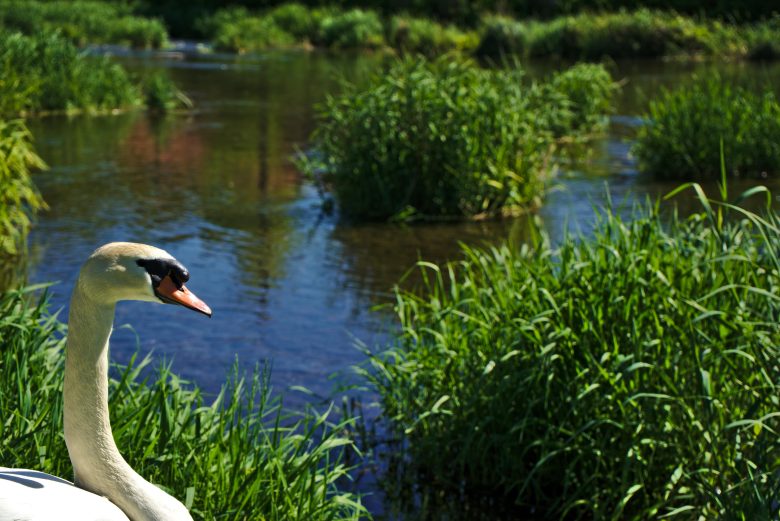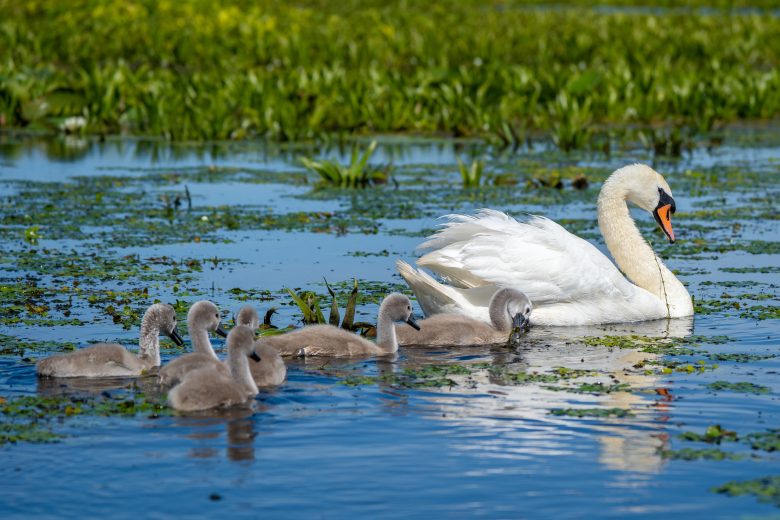The Danube Delta is one of the richest ecosystems in Europe, a unique place where nature follows its course undisturbed. This area is home to over 30 species, each playing a crucial role in maintaining ecological balance.
From playful otters to wild horses, from cunning foxes to dolphins living near the Danube’s mouth, the Danube Delta offers an impressive natural spectacle.
According to a study conducted by the National Research and Development Institute for the Danube Delta, animal populations are increasing due to conservation efforts but still face challenges such as poaching and habitat destruction.
Did you know?
- The Danube Delta is home to the last population of wild horses in Central and Eastern Europe? It is estimated that over 4,000 wild horses live here.
- The European otter (Lutra lutra) is an important ecological indicator, and its presence demonstrates water quality.
- The golden jackal (Canis aureus) and the wildcat (Felis silvestris) are rare mammals in the Delta, but they inhabit the firmer ground areas.
- Near the Danube’s mouth, dolphins from the species Tursiops truncatus and Delphinus delphis can be observed, as they come searching for food.
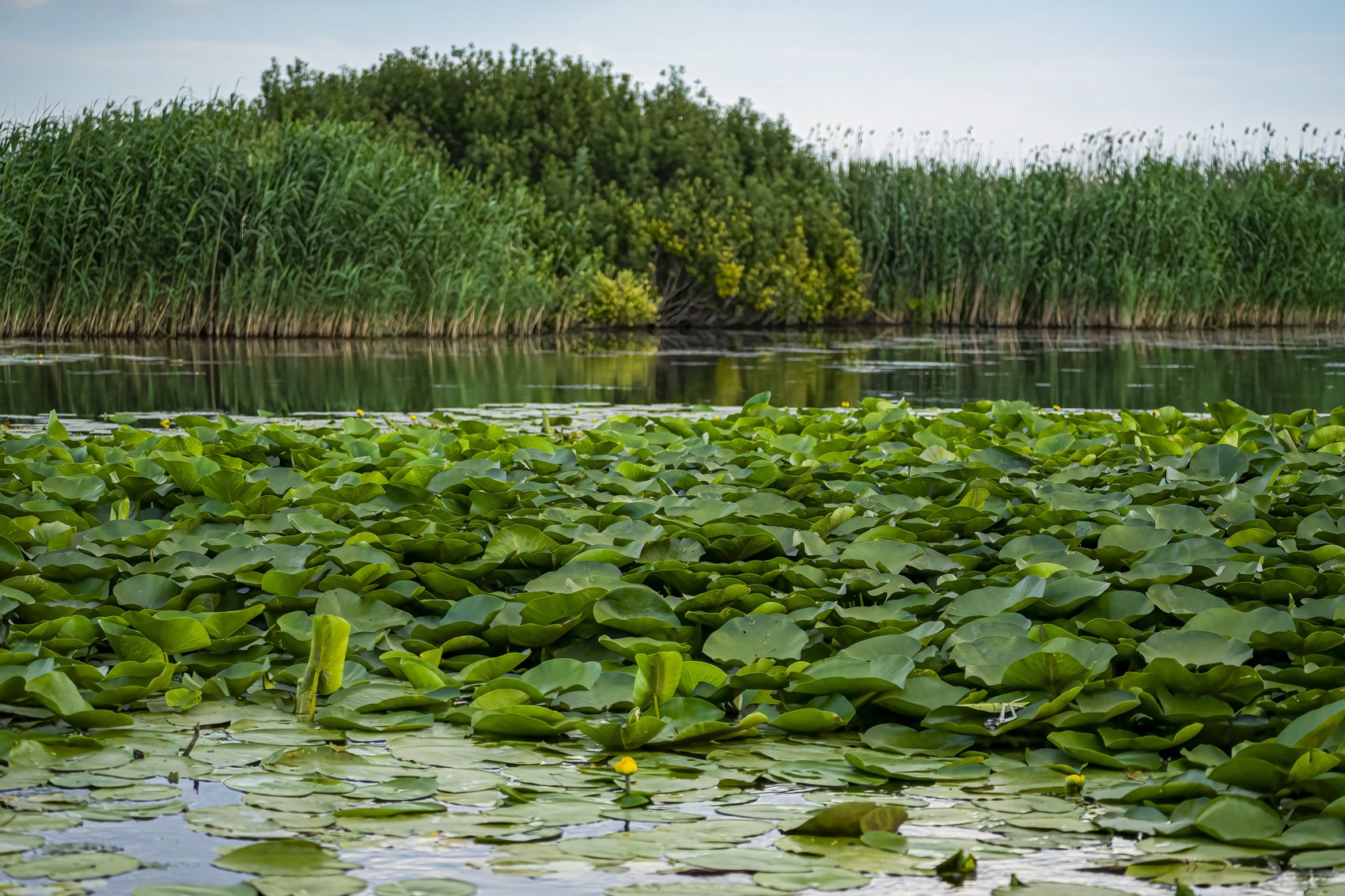
Wildlife of the Danube Delta
The wildlife in the Danube Delta is perfectly adapted to its environment, with some species living in marshy areas, while others inhabit forests or solid ground.
Semi-aquatic mammals
- European otter (Lutra lutra) – an agile fish hunter, mainly active at night.
- European mink (Mustela lutreola) – a rare species, endangered.
- Wild boar (Sus scrofa) – found in reed beds and riparian forests.
Land mammals
In the firmer ground areas of the Danube Delta, you can find:
- Polecat (Mustela putorius) – a small nocturnal predator that feeds on rodents and small birds.
- Roe deer (Capreolus capreolus) – commonly found in wooded areas, well adapted to the Delta habitat.
- Badger (Meles meles) – a solitary mammal that digs elaborate burrows.
- Red fox (Vulpes vulpes) – an opportunistic and intelligent species that feeds on rodents, birds, and fruits.
- Golden jackal (Canis aureus) – rarely seen but increasing in number, preferring open and dry areas.
- Wildcat (Felis silvestris) – a hard-to-spot species with a discreet behavior.
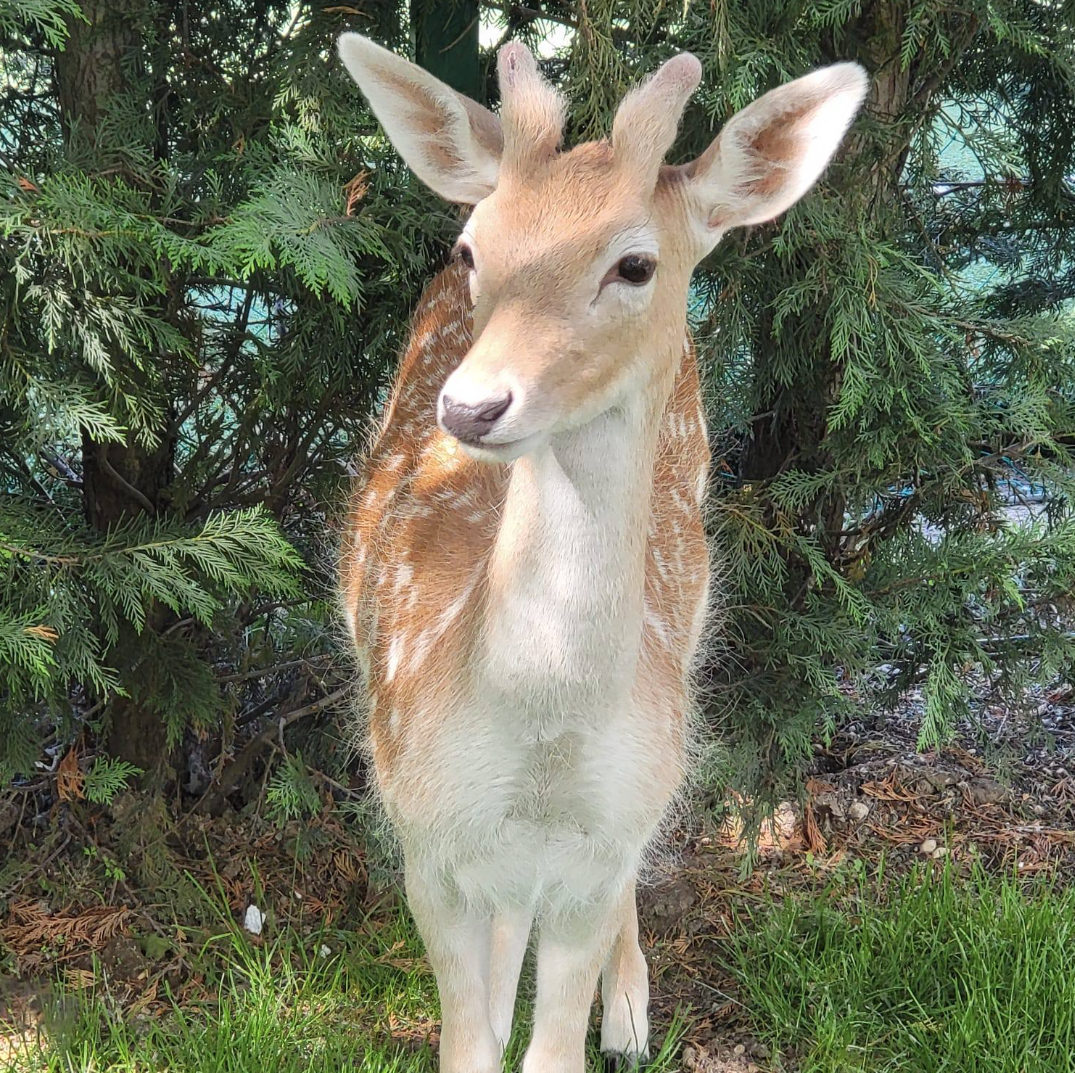
Wild horses of the Danube Delta
- The Danube Delta is home to the last wild horses in Central and Eastern Europe.
- It is estimated that over 4,000 wild horses live in the Letea and Caraorman areas.
- They are descendants of domestic horses abandoned hundreds of years ago.
- Some of them are protected, while others are captured to limit their impact on vegetation.
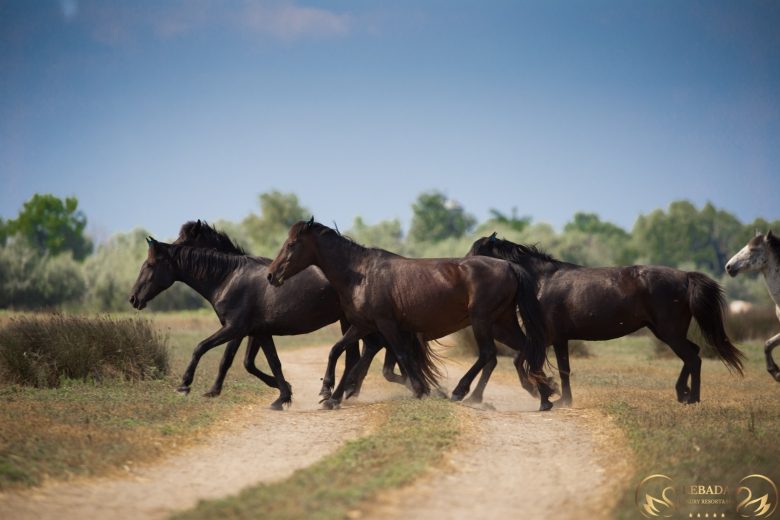
Dolphins at the Danube’s mouth
- Three dolphin species live in the Black Sea, and two of them can be seen near the Danube’s mouth:
- Common dolphin (Delphinus delphis)
- Bottlenose dolphin (Tursiops truncatus)
- Dolphins come to these waters searching for fish and are especially visible in the summer months.
Curiosities about mammal species in the Danube Delta
- Otter and mink populations indicate water quality in the Delta.
- In the last 10 years, jackals have become more common, competing with foxes for food.
- Badgers dig complex burrows, some used by multiple generations.
- The wild horses of Letea Forest are considered a natural treasure, attracting tourists and photographers worldwide.
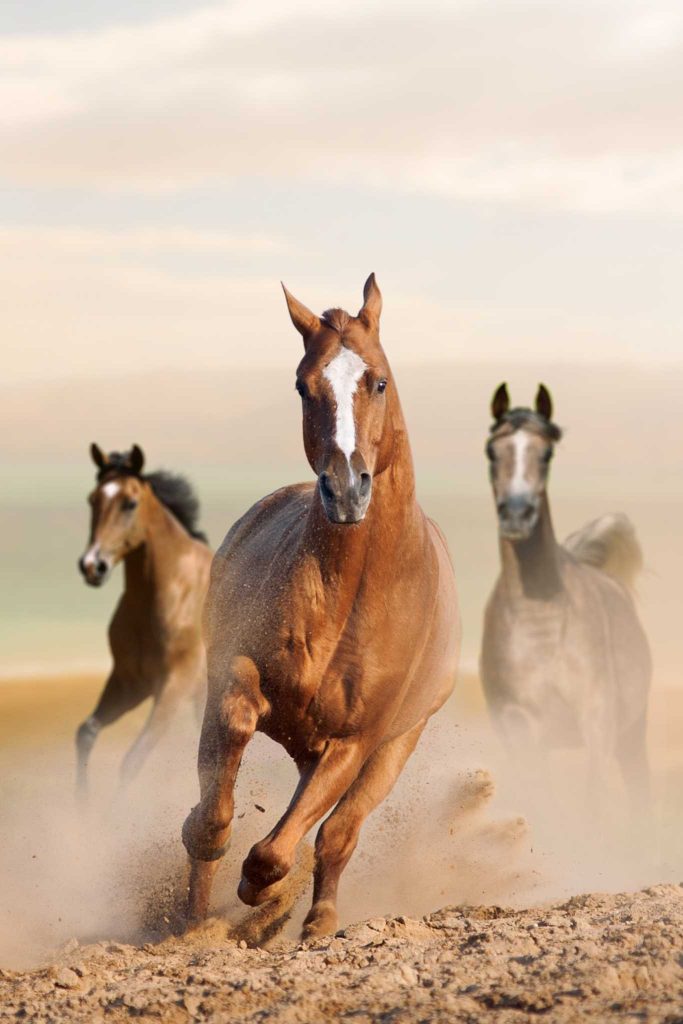
Frequently Asked Questions about Danube Delta Wildlife
- Which mammals are the easiest to spot in the Danube Delta?
Commonly observed mammals include otters, wild boars, roe deer, and foxes. Wild horses are also a symbol of the Delta. - Are there endangered species in the Danube Delta?
Yes, the European mink and wildcat are among the rarest species. The European otter is protected, while the golden jackal is becoming more prevalent. - When is the best time to see animals in the Danube Delta?
Early morning and evening are the best times, as many animals are more active during these periods. - How can I photograph wildlife in the Danube Delta?
For capturing stunning wildlife images, using a telephoto lens and patience is recommended. Boat tours offer unique perspectives of the fauna.
Roe deer at Lebada Luxury Resort & SPA
If you love nature and want to see roe deer in their natural habitat, Lebada Luxury Resort & SPA is the perfect place. These delicate animals symbolize the forests of the area and can be observed in peace, without disturbing their natural habitat.
If you’re lucky, you might capture unique moments with these magnificent mammals!
@lebada.luxury.resort Meet then at Lebada Luxury Resort & SPA 🦌 #traveltoromania #madeinromania #hotelsandresorts #hotelromania #tiktoktravel #hotelhideaway
📲 On TikTok, we frequently post videos of Danube Delta wildlife, including breathtaking footage of deer, wild horses, and otters. Follow us to discover the beauty of the Delta!
Take a break, breathe deeply, and book your vacation with us
The Danube Delta is a unique place in Europe, perfect for relaxation and exploration. If you want to discover wild nature, photograph mammals of the Danube Delta, or enjoy the peace of this ecosystem, we invite you to visit us.
On our YouTube channel, we have posted a detailed guide on how to reach the most beautiful accommodation in the Danube Delta, so you can enjoy a complete, worry-free experience.
📍 We await you at Lebada Luxury Resort & SPA, where comfort and nature blend perfectly!
🔎 Discover our offers and book your Danube Delta vacation now!


